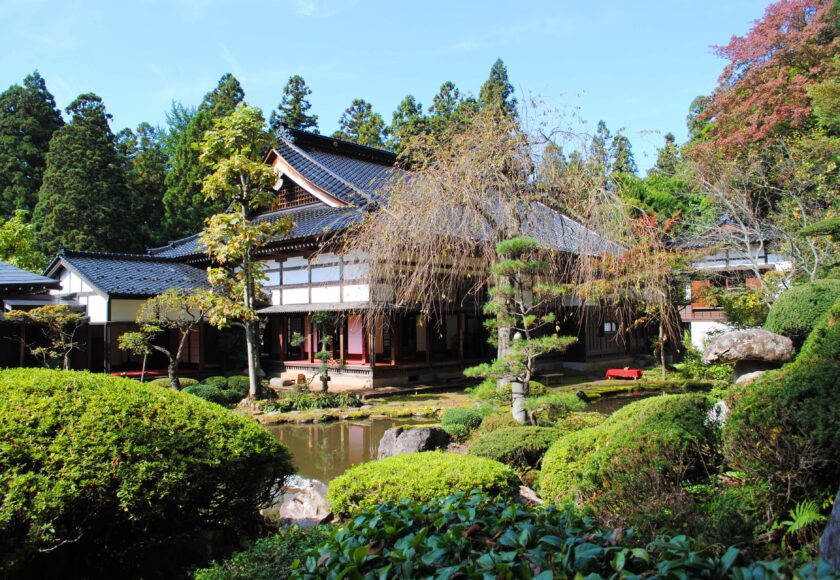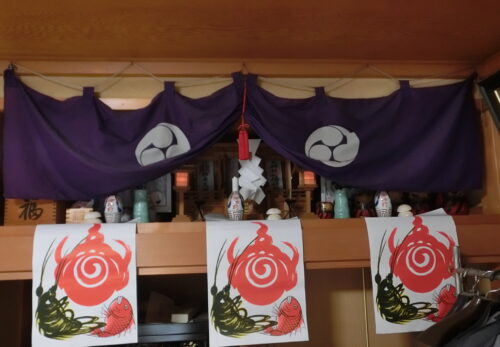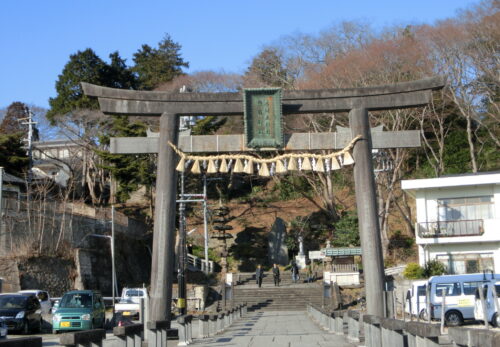Introduction
Welcome to my blog post about traditional Japanese gardening and home vegetable gardening! In this post, I’ll be sharing some insights and tips on how Japanese people approach gardening and growing vegetables, and how you can incorporate these ideas into your own gardening practices.
First, we’ll delve into the world of traditional Japanese gardens, exploring their unique philosophy and features, and learning how to create a Japanese-inspired garden in your own backyard. Then, we’ll shift our focus to home vegetable gardening, discussing why it’s such a popular activity in Japan, and how to grow one of the most beloved vegetables around the world: tomatoes.
By the end of this post, you’ll have a better understanding of the cultural and practical aspects of Japanese gardening and vegetable growing, as well as some actionable ideas for bringing these practices into your own home. So, let’s get started!
Traditional Japanese Gardens
What Makes Japanese Gardens Unique?
Japanese gardens are renowned around the world for their unique philosophy and features. At the heart of Japanese garden design is the concept of wabi-sabi, which celebrates imperfection and transience. This means that Japanese gardens often incorporate natural elements that change with the seasons, such as cherry blossoms, autumn leaves, and moss, as well as deliberate imperfections like uneven stepping stones and asymmetrical arrangements.
Another key aspect of Japanese garden design is minimalism. Japanese gardens are designed to create a sense of spaciousness and tranquility, often with a limited palette of plants and materials. Stone, sand, water, and gravel are common features in Japanese gardens, and they are arranged in a way that creates a sense of harmony and balance.
Japanese gardens also often include traditional elements, such as stone lanterns, bamboo fences, and water features. These elements serve both functional and aesthetic purposes, and are carefully placed to create a sense of natural beauty and serenity.
Overall, Japanese gardens are designed to evoke a sense of peace and mindfulness, and to celebrate the beauty of impermanence and simplicity. By incorporating these principles into your own garden design, you can create a tranquil and beautiful outdoor space that reflects the timeless beauty of Japanese gardens.
- Zen philosophy: Japanese gardens are often inspired by Zen Buddhism, which emphasizes mindfulness, simplicity, and the transience of all things. Japanese gardens are designed to help visitors feel more present and connected to the natural world, and to encourage a sense of inner peace and tranquility.
- Minimalism: Japanese gardens are known for their simplicity and restraint. Rather than overwhelming visitors with an abundance of plants and decorations, Japanese gardens are designed to create a sense of spaciousness and calm. This is achieved through the use of a limited color palette, simple plant arrangements, and minimalist design elements such as stone lanterns and bamboo fences.
- Natural elements: Japanese gardens are designed to incorporate natural elements such as rocks, water, and plants in a way that creates a sense of harmony and balance. For example, rocks may be arranged to create the illusion of mountains or cliffs, while water features may be designed to resemble natural streams or ponds. Plants are chosen for their ability to thrive in the local climate and to create a sense of seasonal change and renewal.
- Harmony: One of the key principles of Japanese garden design is creating a sense of harmony and balance. This is achieved through careful placement of design elements, such as stones, plants, and water features. Each element is chosen and arranged to complement the others, creating a sense of unity and tranquility in the garden. By achieving a sense of harmony in your own garden design, you can create a peaceful and relaxing outdoor space that promotes mindfulness and well-being.
How to Garden in a Japanese Style
- Keep it simple: One of the hallmarks of Japanese garden design is minimalism. Rather than filling your garden with an abundance of plants and decorations, focus on creating a few well-chosen design elements that can stand out and make a statement.
- Incorporate natural elements: Rocks, water, and plants are key elements of traditional Japanese gardens. Consider incorporating a water feature such as a small pond or stream, arranging rocks in a way that suggests a natural landscape, and planting trees and shrubs that are native to your area.
- Create a sense of balance: Japanese garden design emphasizes creating a sense of harmony and balance. Think about how you can balance yin and yang elements in your garden, such as light and shadow, hard and soft surfaces, and natural and man-made features.
- Use color strategically: Japanese garden design often incorporates a limited color palette, with an emphasis on green, gray, and brown tones. Use color strategically to create a sense of depth and contrast, such as by planting a small group of bright flowers or incorporating colorful garden ornaments.
- Embrace imperfection: In Japanese garden design, imperfection is celebrated as a reflection of the impermanence of all things. Don’t be afraid to incorporate elements that are slightly asymmetrical or irregular, such as a winding path or a tree with a gnarled trunk.
By incorporating these tips and ideas into your garden design, you can create a Japanese-inspired garden that promotes tranquility, mindfulness, and connection to the natural world.
stone lanterns, bamboo fences, water features, bonsai trees
Stone lanterns
Stone lanterns are a traditional element of Japanese garden design that can add both functional and aesthetic value to your garden. Consider placing a stone lantern at a focal point in your garden, such as along a pathway or near a water feature, to create a sense of balance and harmony.
Bamboo fences
Bamboo fences are another traditional element of Japanese garden design that can add a sense of privacy and tranquility to your garden. Consider using bamboo fencing to create a backdrop for a water feature or to create a secluded meditation area.
Water features
Water features are an essential element of traditional Japanese gardens, and can add a sense of movement and serenity to your garden design. Consider incorporating a small pond, stream, or fountain into your garden, and surrounding it with natural stones and plants for a natural look.
Bonsai trees
Bonsai trees are a classic Japanese garden feature that can add a sense of scale and dimensionality to your garden. These miniature trees are grown and pruned to create a natural-looking miniature landscape, and can be placed on tables, benches, or even on the ground to create a sense of depth and interest in your garden design.
By incorporating these traditional Japanese design elements into your garden, you can create a space that is both tranquil and beautiful, and that reflects the timeless beauty and simplicity of Japanese garden design.
The Popularity of Home Vegetable Gardening in Japan
Why Japanese People Love Growing Their Own Vegetables
Home vegetable gardening has a long and rich history in Japan, dating back to the Edo period (1603-1868), when urban residents began growing vegetables in small plots of land. Today, vegetable gardening remains a popular hobby and a source of fresh produce for many Japanese households. Here are some cultural and practical reasons behind its enduring popularity:
- Connection to nature: Japanese culture places a high value on connection to the natural world, and gardening is seen as a way to cultivate that connection. Many Japanese gardeners view their gardens as a way to connect with the changing seasons, observe the natural cycles of growth and decay, and find peace and relaxation in nature.
- Health and nutrition: Home-grown vegetables are generally considered healthier and more nutritious than store-bought produce, as they are often grown without pesticides or other chemicals. Additionally, Japanese cuisine places a strong emphasis on fresh, seasonal vegetables, making home vegetable gardening a natural extension of this culinary tradition.
- Space constraints: Japan is a densely populated country with limited space for gardening, making home vegetable gardening a practical solution for many urban residents. Many Japanese gardeners use creative solutions such as vertical gardening, container gardening, and small-scale hydroponic systems to maximize their available space and grow a variety of crops.
- Self-sufficiency: Finally, home vegetable gardening is seen as a way to promote self-sufficiency and reduce reliance on imported foods. This has become an even more pressing concern in recent years, as Japan has faced food supply disruptions due to natural disasters and other factors.
By exploring these cultural and practical reasons behind the popularity of home vegetable gardening in Japan, we can gain a deeper appreciation for this timeless practice and its enduring appeal.
self-sufficiency, healthy eating, appreciation for nature
Self-sufficiency
In Japan, there is a strong cultural value placed on self-sufficiency and independence, and home vegetable gardening is seen as a way to achieve these goals. By growing their own food, Japanese gardeners can reduce their reliance on outside sources and feel a sense of pride and accomplishment in their ability to provide for themselves and their families.
Healthy eating
Japanese cuisine is known for its emphasis on fresh, seasonal ingredients, and home vegetable gardening is a natural extension of this culinary tradition. By growing their own vegetables, Japanese gardeners can ensure that their food is free of harmful chemicals and additives, and can enjoy the health benefits of a diet rich in fresh produce.
Appreciation for nature
Japanese culture places a high value on harmony with nature, and gardening is seen as a way to cultivate that connection. By spending time in their gardens, Japanese gardeners can observe the changing seasons, appreciate the beauty of natural cycles of growth and decay, and find peace and relaxation in the midst of a busy urban environment.
By exploring these co-occurring phrases, you can help your readers gain a deeper understanding of the cultural and practical significance of home vegetable gardening in Japan, and inspire them to cultivate their own appreciation for self-sufficiency, healthy eating, and the natural world.
How to Grow Tomatoes in Your Backyard
- Choose your tomato variety: There are many different types of tomatoes to choose from, including cherry, beefsteak, and heirloom varieties. Choose a variety that is well-suited to your climate and growing conditions.
- Start your seeds: Tomato seeds can be started indoors 6-8 weeks before the last frost date in your area. Plant your seeds in a container with soilless potting mix, and keep them in a warm, sunny location. Keep the soil moist but not waterlogged, and fertilize with a balanced fertilizer once a week.
- Transplant your seedlings: Once your seedlings have grown to 6-8 inches tall, they are ready to be transplanted into larger containers or into your garden. Choose a location with well-draining soil and full sun exposure.
- Plant your tomatoes: Dig a hole in the soil that is deep enough to accommodate the entire root ball of your tomato plant. Gently remove the plant from its container and place it in the hole, covering the roots with soil. Water thoroughly.
- Water and fertilize: Tomatoes need regular watering to thrive, especially during hot, dry weather. Water deeply once a week, making sure the soil is evenly moist but not waterlogged. Fertilize with a balanced fertilizer once a month throughout the growing season.
- Support your plants: Tomatoes need support as they grow, to prevent the fruit from touching the ground and to encourage healthy growth. You can use stakes, cages, or trellises to support your plants.
- Harvest your tomatoes: Tomatoes are ready to harvest when they are firm, fully colored, and slightly soft to the touch. Pick them carefully to avoid damaging the plant, and store them in a cool, dry location until ready to use.
By following these step-by-step instructions, you can successfully grow delicious, juicy tomatoes at home and enjoy the many benefits of homegrown produce.
Conclusion
In conclusion, traditional Japanese gardens offer a beautiful and serene space for relaxation and contemplation, reflecting the country’s rich cultural heritage and appreciation for nature. Meanwhile, growing tomatoes in Japan can be a rewarding and enjoyable experience, with many local varieties to choose from and a strong emphasis on organic and sustainable gardening practices. Whether you’re looking to create a peaceful outdoor sanctuary or try your hand at growing fresh produce, exploring the world of Japanese gardening can offer many insights and inspiration. So why not give it a try and see where your own gardening journey takes you?
Funny Japanese doing Tomato gardening on his Japanese garden
If you are interesting in Japanese garden and Tomato gardening, please enjoy this YouTube video. You can see the real Japanese talking cheep English and doing Tomato gardening.











No comments yet.